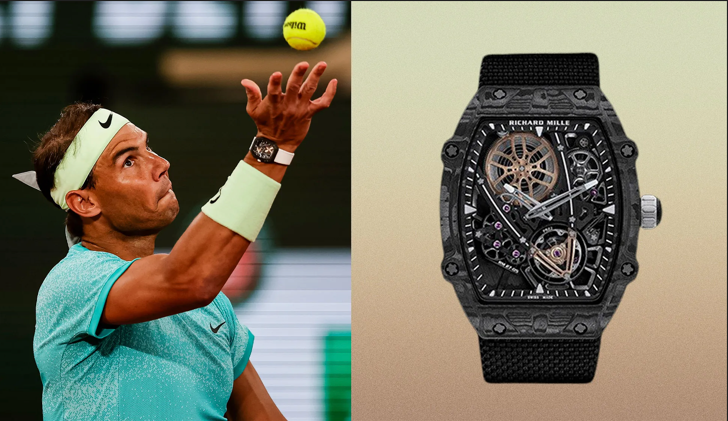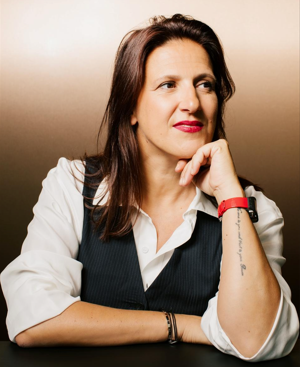
Image credit: Forbes (2025)
Richard Mille is one of the few names in haute horlogerie that people respect, admire, and want to own. Richard Mille is known for making watches that combine cutting-edge engineering with artistic vision. He is now known for luxury, precision, and disruption. But what makes this Swiss brand stand out is not just its technical creativity; it’s also its dynamic approach to brand management, especially under women’s leadership, which has changed its creative and strategic direction. The recent Forbes article “The Women Redefining Richard Mille” (2025) shows how visionary women are changing the brand for the better. These leaders embody the values that make Richard Mille more than just a watchmaker; it is a living philosophy of excellence. They drive product innovation and curate stories that connect with new generations of collectors.
Richard Mille: The Design of Modern Luxury
Richard Mille started the brand in 2001 with a radical idea: to combine the latest technology from aerospace and Formula 1 with the traditional skills of Swiss watchmaking. This changed the way luxury watches were made. What happened? A new type of watch that literally and figuratively defies gravity. Every Richard Mille watch is a work of art in engineering. The RM27-01 Rafael Nadal can handle forces up to 5,000 g’s and weighs only 18.83 grams. The RM056, with its clear sapphire case, is the most transparent watch design ever, both in terms of materials and craftsmanship. These aren’t just accessories; they’re machines you can wear that showcase your uniqueness, creativity, and durability.

Image credit: Forbes (2025); Getty Images, Richard Mille via GQ (2024)
Richard Mille has always been a master at strategically managing a luxury brand, not just because it works well. The brand has built what many call “the billionaire’s handshake” through selective distribution, limited production runs, and stories based on sports, art, and innovation. Each model is a sign that you belong to an exclusive group defined not by showiness but by good taste and an understanding of technology as art. This exclusivity makes the audience feel privileged and elite.
How Management Can Keep Prestige Alive
Richard Mille’s success is based on a management style that combines creative freedom with precise operations. Richard Mille is different from other luxury brands because it doesn’t just rely on its history. Instead, it has forward-thinking leaders who ensure that design, marketing, and management work together smoothly. This emphasis on forward-thinking leadership inspires the audience and makes them feel forward-looking. Women in leadership roles have been a big part of this change. They have changed the brand’s creative stories and its customer interactions.These women are not only running the brand but also bringing it up to date, as Forbes (2025)points out. They have turned Richard Mille into a truly inclusive luxury powerhouse by making it more appealing to women and other markets that women drive.
For example, the brand’s work with female athletes like Nelly Korda, Yuliya Levchenko, and Michelle Yeoh shows a broader view of what it means to be strong and sophisticated. Richard Mille doesn’t market watches as status symbols; instead, he markets them as tools of empowerment made for people of all genders who want to push the limits. From a management perspective, this change demonstrates a deep understanding of how luxury branding operates from a consumer psychology perspective. Today’s luxury buyers care about more than just price tags. They want to find products that match their values, are real, are new, and are hard to find. The brand’s management team is in charge of strategic storytelling, which keeps Richard Mille aspirational while adapting to how people across generations perceive it.
New ideas through Vision and Human Capital
Product alone won’t make a brand successful, especially in the high-end market. It’s based on people and ideas. Richard Mille’s management demonstrates that creating a culture of excellence across all areas, from R&D and marketing to customer service, keeps the company in high demand over time. The idea that luxury is not about having more but about having meaning guides every decision a manager makes. This focus on meaning makes the audience feel connected and understood. Limiting production to fewer than 5,000 watches a year makes them even rarer, and getting to know your customers on a personal level makes them more loyal. The company’s leaders are both strategists and storytellers. They create experiences that turn ownership into identity.
Wealth, Power, and History
It’s clear from what Richard Mille teaches the business world that managing a brand isn’t just about sales or visibility. It’s about making and keeping meaning that lasts. The brand’s steady focus on craftsmanship, innovation, and emotional storytelling shows that good management can keep things real while still being modern in a time when digital trends change overnight. This isa potent reminder for people who want to be leaders or entrepreneurs: the best brands are not led, they are lived. To be a good leader, especially in the luxury industry, you need to think analytically, be creative, and understand people.
Arman POUREISA
Marketing Manager
References
Forbes. (2025, October 20). The women redefining Richard Mille. Forbes.
https://www.forbes.com/sites/richard-mille/2025/10/20/the-women-redefining-richard-mille/
GQ. (2024, June 5). Rafael Nadal’s new Richard Mille RM 27-05 is a $1.2 million watch designed to survive the impossible. GQ Magazine.
https://www.gq.com/story/rafael-nadal-richard-mille-rm-27-05
Danziger, P. N. (2024, March 18). How luxury brands sustain success through storytelling and scarcity. Forbes.https://www.forbes.com
Kapferer, J.-N., & Bastien, V. (2020). The luxury strategy: Break the rules of marketing to build luxury brands (3rd ed.). Kogan Page.
Ko, E., Costello, J. P., & Taylor, C. R. (2019). What is a luxury brand? A new definition and review of the literature. Journal of Business Research, 99, 405–413.
Okonkwo, U. (2021). Luxury fashion branding: Trends, tactics, techniques. Palgrave Macmillan.







